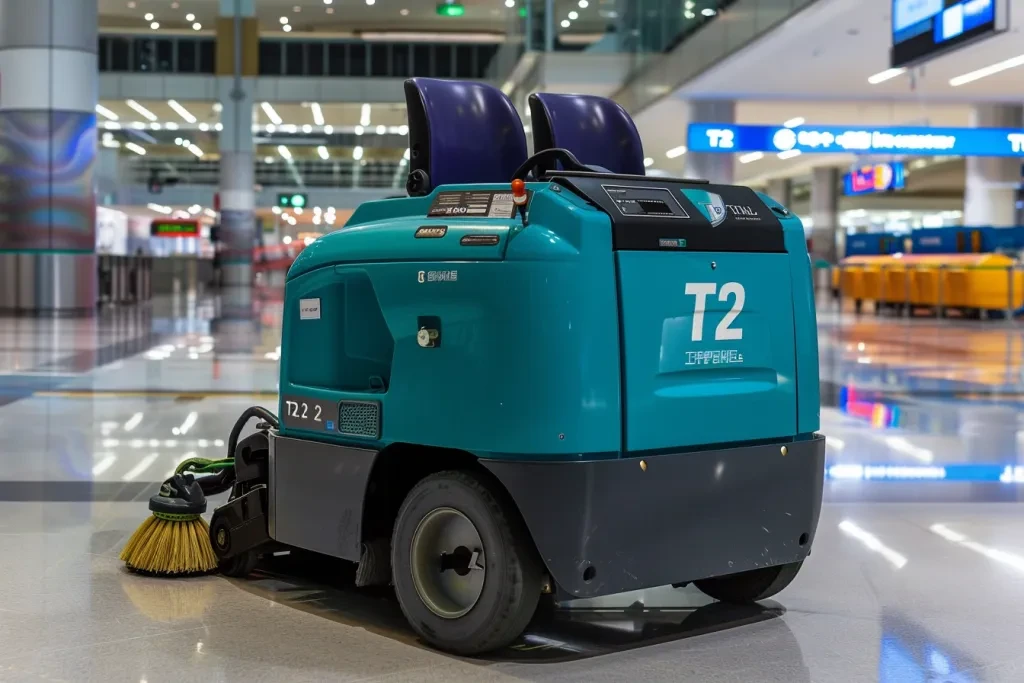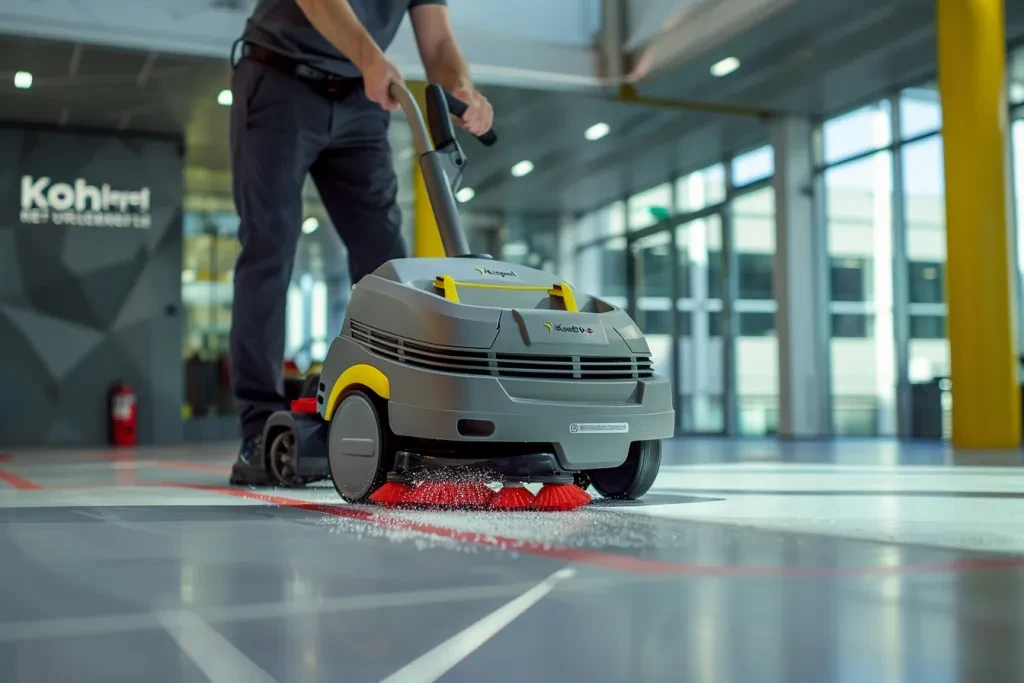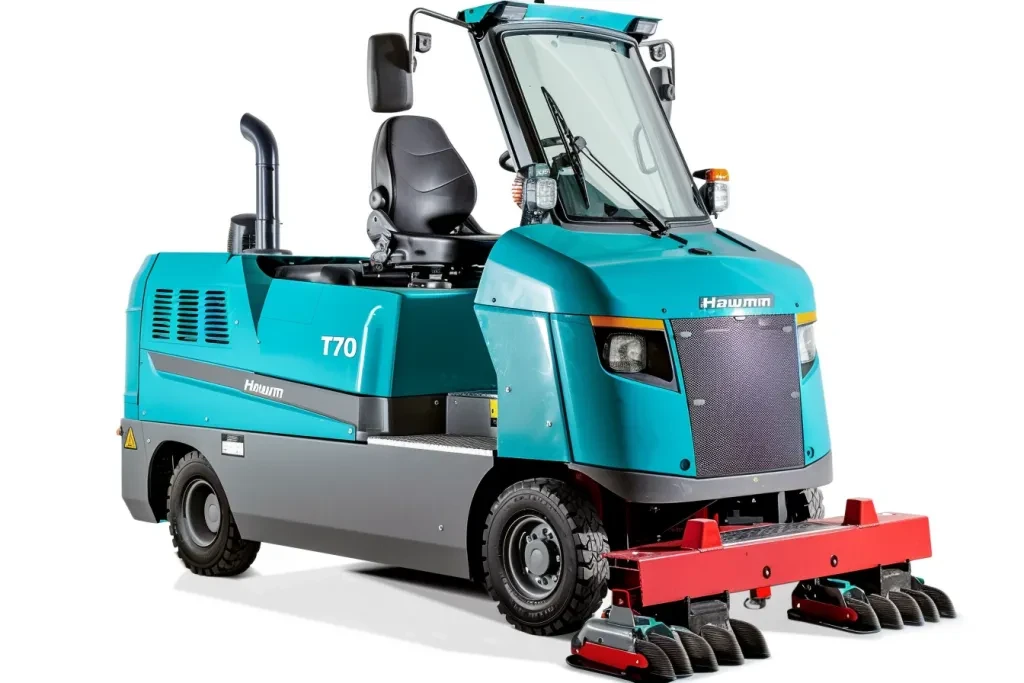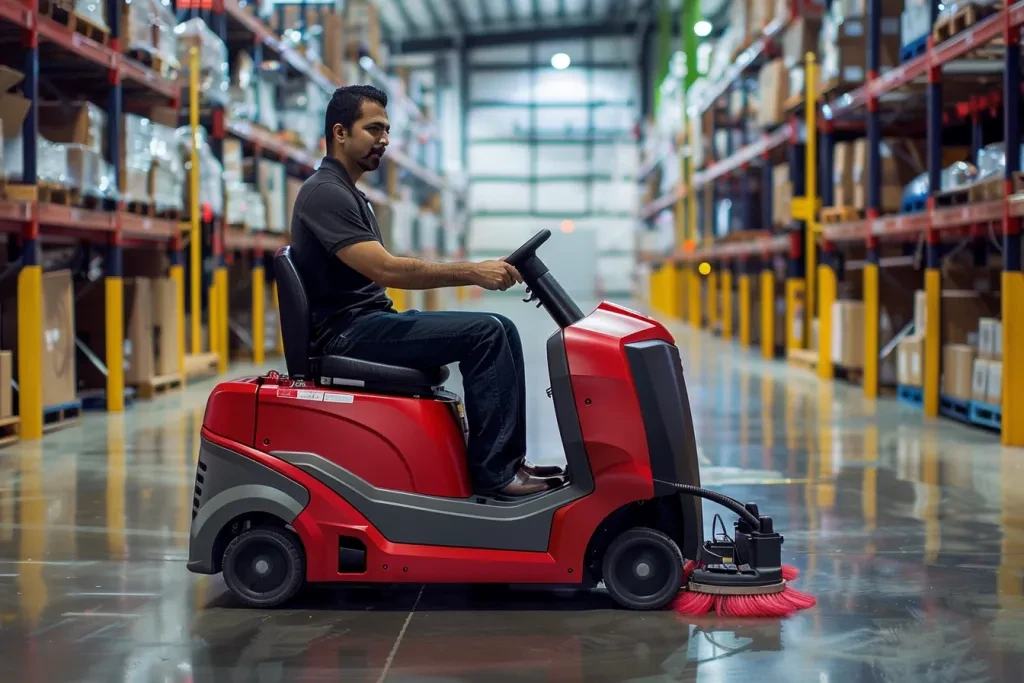Recent advancements in automated cleaning technologies have reshaped the floor scrubber market, making 2025 a pivotal year for business buyers. This article delves into essential criteria for selecting the best floor scrubber machines, from types and performance to latest innovations. Professional buyers will find valuable insights to navigate the expanding market and make informed decisions for optimal business operations.
Table of Contents:
Floor Scrubber Machine Market Overview
Detailed Market Introduction and Analysis
Key Factors When Selecting a Floor Scrubber Machine
Innovations in Floor Scrubber Machine Technology
The Importance of Maintenance and Support
Ensuring Safety and Compliance
Conclusion
Floor Scrubber Machine Market Overview

The global market for floor scrubber machines has seen significant growth in recent years due to the rising demand for efficient and automated cleaning solutions across various sectors. In 2024, the market was valued at around $5.24 billion, and it is projected to reach $8.25 billion by 2030, with a compound annual growth rate (CAGR) of 7.7%. This growth is driven by increased awareness of hygiene standards, technological advancements, and the expansion of commercial and industrial spaces.
North America has been the largest market for floor scrubbers, accounting for over 34% of the market share in 2023. This is due to high cleanliness awareness, advanced infrastructure, and rising labor costs, which promote the adoption of automated cleaning solutions. The Asia-Pacific region is expected to be the fastest-growing market during the forecast period, driven by rapid urbanization, industrialization, and increased investments in infrastructure projects.
Industrial floor scrubbers, a key segment within the market, are expected to grow from $4.06 billion in 2024 to $5.49 billion by 2030, at a CAGR of 5.1%. This growth is driven by the need for robust cleaning solutions in industrial settings, the adoption of eco-friendly technologies, and the increasing use of automation in maintenance practices.
Detailed Market Introduction and Analysis

Key Performance Benchmarks
The floor scrubber market offers diverse products, including walk-behind, ride-on, and robotic scrubbers. Walk-behind scrubbers are cost-effective and suitable for smaller areas. Ride-on scrubbers are preferred for large spaces due to their efficiency and ease of use. Robotic scrubbers, equipped with advanced sensors and AI technology, are gaining popularity for automating cleaning tasks and reducing labor costs.
Market Share Dynamics
Leading players like Alfred Kärcher SE & Co. KG, Nilfisk A/S, and Tennant Company hold significant market shares due to their extensive product portfolios and strong distribution networks. These companies continuously innovate, introducing advanced features like AI-driven navigation and eco-friendly cleaning technologies. Emerging players focus on niche segments and innovative solutions to capture market share.
Economic Influences and Consumer Behavior Shifts
The emphasis on workplace safety and hygiene, driven by health crises and stringent cleanliness regulations, has significantly influenced consumer behavior. Industries such as healthcare, hospitality, and manufacturing are investing in advanced cleaning solutions to maintain high hygiene standards. Moreover, growing environmental sustainability awareness has increased the demand for eco-friendly floor scrubbers that minimize water and chemical usage.
Seasonal Demand Patterns and Distribution Channel Preferences
Seasonal demand for floor scrubbers peaks during spring and autumn, coinciding with major cleaning and maintenance activities in commercial and industrial facilities. Distribution channels include direct sales, which held the largest share in 2023, and indirect sales through distributors and retailers. Direct sales channels offer competitive pricing by eliminating intermediaries, while indirect channels leverage established relationships with end-users to drive sales.
Recent Innovations and Product Lifecycle Stages
Recent innovations in the floor scrubber market include robotic scrubbers with EC-H2O technology, which reduces water usage and extends scrubbing time. Companies are also integrating IoT capabilities for predictive maintenance and enhanced connectivity. The product lifecycle stages range from introduction and growth, with continuous technological advancements, to maturity, where established products dominate the market.
Digitalization and Social Trends
Digitalization is transforming the floor scrubber market, with AI, cloud computing, and mobile data transmission enabling the development of autonomous cleaning solutions. Social trends, such as the preference for automation and sustainable practices, drive the adoption of innovative floor scrubbers that offer enhanced efficiency and reduced environmental impact.
Environmental Regulations and Customer Pain Points
Environmental regulations on water and chemical usage in cleaning processes influence the development of eco-friendly floor scrubbers. Customers often face high initial costs and maintenance expenses, deterring small and medium enterprises from adopting these technologies. To address these challenges, companies are developing cost-effective models and offering subscription-based services to enhance affordability.
Brand Positioning and Differentiation Strategies
Leading brands position themselves as providers of innovative, high-quality, and sustainable cleaning solutions. Differentiation strategies include offering advanced features such as AI-driven navigation, self-cleaning mechanisms, and energy-efficient models. Companies are also exploring partnerships with cleaning service providers and expanding their product offerings to cater to emerging markets.
Niche Markets
Niche markets within the floor scrubber industry include specialized scrubbers for specific applications, such as healthcare facilities, educational institutions, and high-traffic retail environments. These segments require tailored solutions that address unique cleaning challenges and regulatory requirements, presenting opportunities for companies to develop targeted products and capture market share.
Key Factors When Selecting a Floor Scrubber Machine

When selecting a floor scrubber machine, several critical factors must be considered to ensure you choose the right equipment for your specific needs. These factors include the types of floor scrubbers available, performance and functionality, technical specifications, build quality and materials, and the latest technology features. Understanding these aspects will help you make an informed decision and maximize the efficiency and effectiveness of your cleaning processes.
Types of Floor Scrubber Machines
Floor scrubber machines come in various types, each designed for different cleaning requirements and environments. The most common types include walk-behind scrubbers, ride-on scrubbers, and robotic scrubbers. Walk-behind scrubbers are ideal for smaller areas and are manually operated, providing excellent maneuverability and control. Ride-on scrubbers are suitable for larger spaces, offering higher productivity and less operator fatigue due to their seated operation. Robotic scrubbers represent the latest innovation, featuring autonomous operation and advanced navigation systems, making them perfect for large commercial facilities that require consistent and thorough cleaning.
The choice of scrubber type depends on factors such as the size of the area to be cleaned, the level of dirt and grime, and the frequency of cleaning. For instance, a walk-behind scrubber might be more suitable for retail stores with narrow aisles, while a ride-on scrubber could be better for warehouses or industrial facilities with vast floor spaces. Robotic scrubbers, with their ability to operate independently, are particularly beneficial in environments where continuous cleaning is necessary without constant human supervision.
Performance and Functionality
The performance and functionality of a floor scrubber machine are essential considerations. Key performance indicators include cleaning width, brush speed, and water recovery rate. Cleaning width determines how much floor area the machine can cover in a single pass, with wider cleaning paths generally leading to higher productivity. Brush speed, measured in rotations per minute (RPM), affects the scrubbing efficiency, with higher speeds providing more aggressive cleaning action for stubborn dirt and stains.
Water recovery rate is another crucial aspect, as it indicates how effectively the machine can pick up dirty water from the floor. A high recovery rate ensures that the floor is left dry and safe to walk on immediately after cleaning, reducing the risk of slips and falls. Additionally, the functionality of the machine, such as adjustable brush pressure and variable water flow settings, allows for customization based on the specific cleaning requirements of different floor types and levels of soiling.
Technical Specifications
Technical specifications play a significant role in determining the suitability of a floor scrubber machine for your needs. Important specifications to consider include battery capacity, run time, and charging time for battery-powered models, as well as power consumption and cord length for electric models. Battery capacity and run time are particularly important for ensuring that the machine can complete the cleaning task on a single charge, minimizing downtime and maximizing productivity.
For electric models, power consumption affects operating costs, with more energy-efficient models being preferable for long-term use. Cord length is also a consideration, as it determines the range of movement and convenience during operation. Additionally, the weight and dimensions of the machine can impact ease of use and storage, especially in environments with limited space.
Build Quality and Materials
The build quality and materials used in the construction of floor scrubber machines directly impact their durability and longevity. High-quality machines are typically made from robust materials such as stainless steel or heavy-duty plastic, which can withstand the rigors of frequent use in demanding environments. The design should also be ergonomic, providing comfort and ease of use for the operator, with features such as adjustable handles and user-friendly controls.
Durability is crucial for ensuring that the machine can handle the wear and tear of daily cleaning tasks without frequent breakdowns or maintenance issues. Machines with solid construction and high-quality components are more likely to offer reliable performance over an extended period, providing better value for the investment.
Latest Technology Features
The latest technology features in floor scrubber machines can significantly enhance their efficiency and effectiveness. Innovations such as advanced navigation systems, automated cleaning modes, and real-time performance monitoring are becoming increasingly common. For example, robotic scrubbers equipped with AI and machine learning capabilities can map out cleaning routes, avoid obstacles, and adapt to changing environments, ensuring thorough and efficient cleaning with minimal human intervention.
Other technological advancements include water recycling systems that reduce water usage and eco-friendly cleaning solutions that minimize environmental impact. Connectivity features, such as remote monitoring and control via smartphone apps, allow for better management and optimization of cleaning operations, providing valuable insights into usage patterns and maintenance needs.
Innovations in Floor Scrubber Machine Technology

The floor scrubber machine industry has seen significant advancements in technology, leading to more efficient and effective cleaning solutions. These innovations include robotic automation, eco-friendly cleaning solutions, and advanced data analytics, all of which contribute to improved performance and sustainability.
Robotic Automation
Robotic automation has revolutionized the floor scrubber machine industry, offering fully autonomous cleaning solutions that require minimal human intervention. These machines are equipped with advanced sensors and navigation systems, allowing them to map out cleaning routes, avoid obstacles, and adapt to changes in the environment. Robotic scrubbers can operate continuously, providing consistent and thorough cleaning, which is particularly beneficial in large commercial facilities such as airports, shopping malls, and warehouses.
The integration of artificial intelligence (AI) and machine learning further enhances the capabilities of robotic scrubbers. These technologies enable the machines to learn from their cleaning experiences, optimizing their performance over time. For example, robotic scrubbers can identify high-traffic areas that require more frequent cleaning and adjust their cleaning schedules accordingly, ensuring that the facility remains clean and presentable at all times.
Eco-Friendly Cleaning Solutions
As environmental concerns continue to grow, the demand for eco-friendly cleaning solutions has increased. Floor scrubber machines are now being designed with features that minimize their environmental impact, such as water-saving technologies and the use of biodegradable cleaning agents. Water recycling systems, for instance, allow the machines to reuse water multiple times, reducing overall water consumption and lowering operational costs.
Biodegradable cleaning agents are another eco-friendly innovation, providing effective cleaning without the use of harsh chemicals that can harm the environment. These agents break down naturally, reducing the risk of pollution and ensuring a safer and healthier environment for both the operators and the occupants of the facility.
Advanced Data Analytics
The incorporation of advanced data analytics in floor scrubber machines allows for better management and optimization of cleaning operations. Machines equipped with sensors and connectivity features can collect and transmit data on various performance metrics, such as cleaning efficiency, water usage, and battery life. This data can be analyzed in real-time to identify trends and areas for improvement, enabling facility managers to make informed decisions and optimize their cleaning processes.
Remote monitoring and control capabilities also provide greater flexibility and convenience. Facility managers can monitor the performance of their floor scrubber machines from anywhere, making adjustments as needed to ensure optimal cleaning results. Predictive maintenance features, powered by data analytics, can identify potential issues before they become major problems, reducing downtime and extending the lifespan of the machines.
The Importance of Maintenance and Support

Proper maintenance and support are crucial for ensuring the longevity and optimal performance of floor scrubber machines. Regular maintenance, access to genuine spare parts, and reliable customer support all contribute to the overall effectiveness and efficiency of the cleaning equipment.
Regular Maintenance
Regular maintenance is essential for keeping floor scrubber machines in good working condition. This includes routine tasks such as cleaning the brushes and squeegees, checking the water and solution tanks, and inspecting the batteries and electrical components. Regular maintenance helps prevent breakdowns and ensures that the machine operates at peak performance, providing consistent and effective cleaning results.
Facility managers should establish a maintenance schedule based on the manufacturer’s recommendations and the specific usage patterns of their floor scrubber machines. By adhering to this schedule, they can identify and address potential issues early, reducing the risk of costly repairs and extending the lifespan of the equipment.
Access to Genuine Spare Parts
Access to genuine spare parts is critical for maintaining the performance and reliability of floor scrubber machines. Using original equipment manufacturer (OEM) parts ensures compatibility and quality, reducing the risk of malfunctions and extending the lifespan of the machine. OEM parts are designed to meet the exact specifications of the machine, providing a perfect fit and optimal performance.
Facility managers should work with reputable suppliers and service providers to ensure access to genuine spare parts and avoid the use of inferior or counterfeit components. This not only ensures the longevity of the equipment but also maintains the manufacturer’s warranty and support.
Reliable Customer Support
Reliable customer support is essential for addressing any issues or concerns that may arise with floor scrubber machines. Manufacturers and service providers should offer comprehensive support services, including technical assistance, troubleshooting, and training for operators. Access to knowledgeable and responsive support teams can help facility managers quickly resolve any problems and minimize downtime, ensuring that their cleaning operations run smoothly.
In addition to technical support, manufacturers should provide training programs for operators to ensure they are well-versed in the proper use and maintenance of the machines. This helps prevent misuse and damage, further extending the lifespan of the equipment and optimizing its performance.
Ensuring Safety and Compliance

Safety and compliance are critical considerations when selecting and operating floor scrubber machines. Adhering to safety standards and regulations not only protects operators but also ensures the safe and efficient operation of the equipment.
Safety Standards and Certifications
Floor scrubber machines should meet industry safety standards and certifications to ensure they are safe to use. These standards cover various aspects of the machine’s design and operation, including electrical safety, mechanical stability, and environmental impact. Common certifications for floor scrubber machines include CE, UL, and ISO standards, which indicate that the equipment has been tested and approved for safety and performance.
Facility managers should verify that the floor scrubber machines they purchase meet the necessary safety standards and certifications. This provides peace of mind and ensures that the equipment is safe for operators and compliant with regulatory requirements.
Operator Training and Safety Protocols
Proper training for operators is essential for ensuring the safe and effective use of floor scrubber machines. Operators should be trained on the machine’s features, controls, and safety protocols, including how to handle emergencies and perform routine maintenance tasks. Training programs should be provided by the manufacturer or a certified training provider to ensure that operators are well-prepared to use the equipment safely and efficiently.
In addition to training, facility managers should establish and enforce safety protocols for the use of floor scrubber machines. This includes guidelines for proper operation, maintenance, and storage of the equipment, as well as procedures for handling spills, leaks, and other emergencies. By promoting a culture of safety and compliance, facility managers can minimize the risk of accidents and ensure the well-being of their operators.
Regular Safety Inspections
Regular safety inspections are crucial for identifying and addressing potential hazards associated with the use of floor scrubber machines. Inspections should be conducted by qualified personnel and cover all aspects of the machine’s operation, including electrical components, mechanical parts, and safety features. Any issues identified during the inspection should be addressed promptly to ensure the safe operation of the equipment.
Facility managers should establish a schedule for regular safety inspections based on the manufacturer’s recommendations and the specific usage patterns of their floor scrubber machines. By conducting thorough inspections and addressing any issues early, they can maintain a safe working environment and ensure the continued reliability and performance of the equipment.
Conclusion:
Choosing the right floor scrubber machine involves understanding the technology, considering key features, exploring different types, and committing to regular maintenance. By taking these factors into account, you can enhance your cleaning routine, improve efficiency, and make a positive impact on the environment. With the right information and approach, finding the perfect floor scrubber machine is an achievable goal that will elevate the cleanliness and hygiene of your space.




